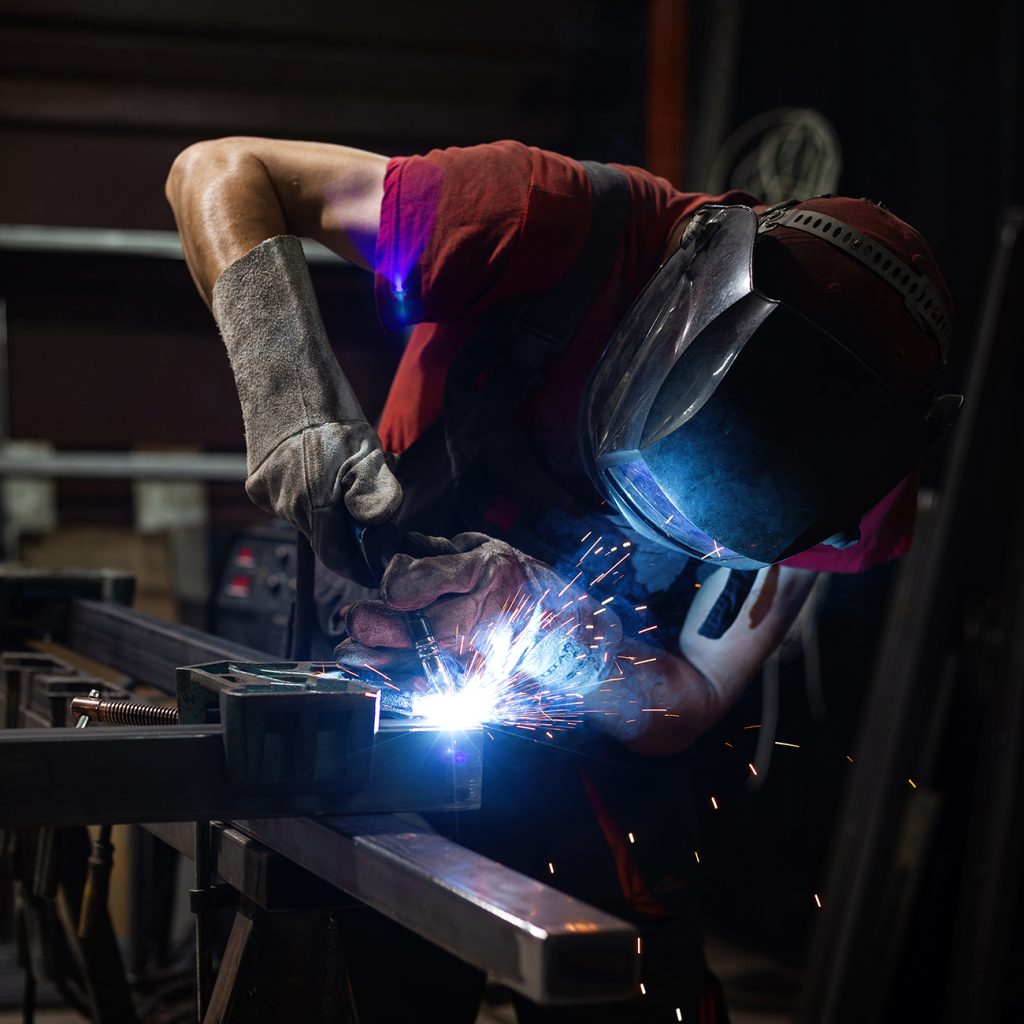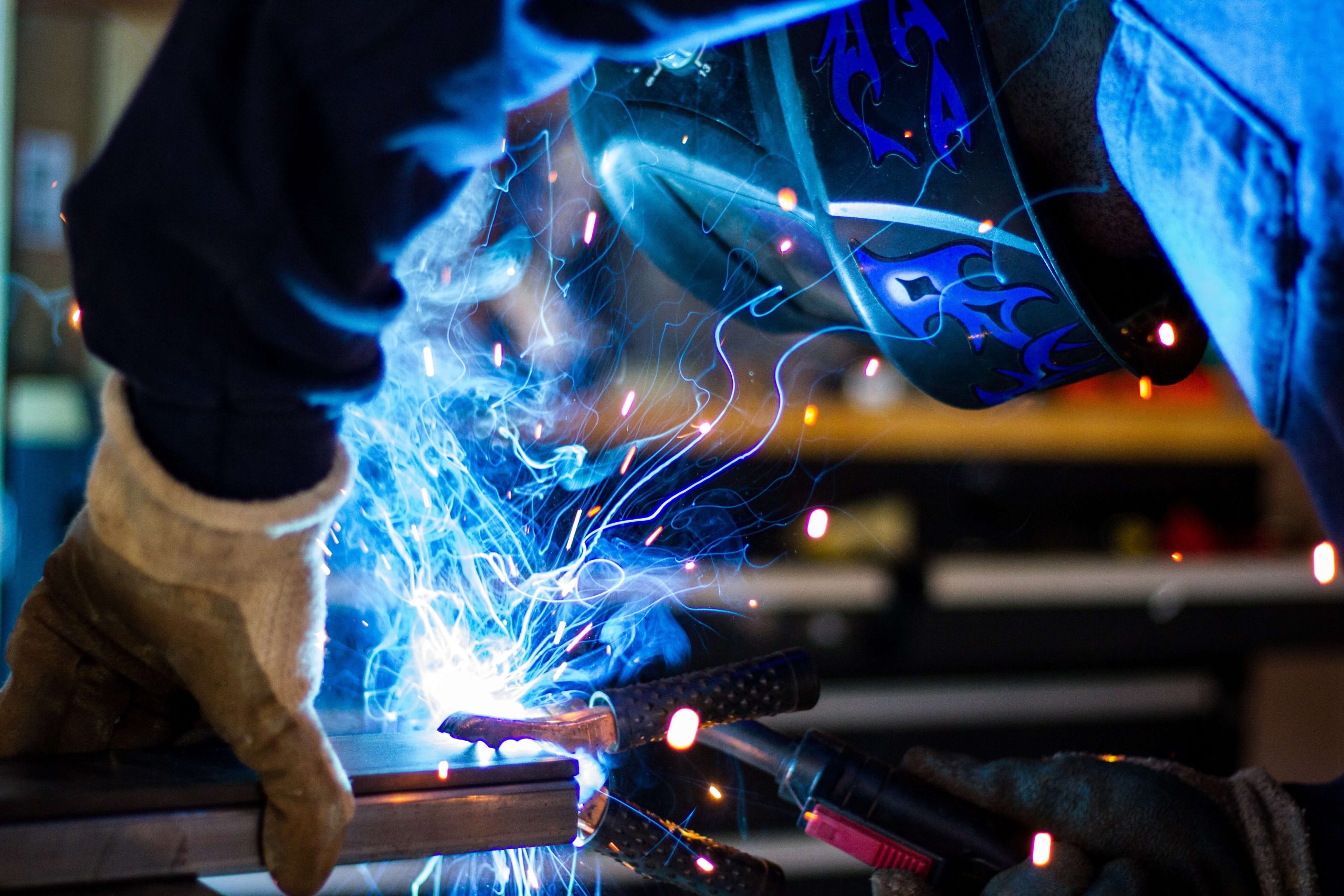A guide to perfect fusion with Montana Mobile Welding and Repair Belgrade Fabrication
All Regarding Welding: Trick Insights Into Techniques and Best Practices for Success
Welding incorporates a selection of techniques, each suited for details products and applications. Recognizing these methods, such as GMAW, SMAW, and TIG, is essential for accomplishing perfect outcomes. In addition, the appropriate devices and security practices can not be overlooked. As preparation and fixing play vital functions in the welding procedure, understanding these aspects can considerably boost the high quality of the final item. What are the vital variables that guarantee an effective weld?
Comprehending Various Welding Methods
Welding strategies include a variety of approaches, each matched to details applications and products. Amongst one of the most common strategies are Gas Steel Arc Welding (GMAW), Secured Metal Arc Welding (SMAW), and Tungsten Inert Gas Welding (TIG) GMAW, also called MIG welding, is preferred for its rate and convenience, making it perfect for thin materials. SMAW, or stick welding, is favored for its simpleness and effectiveness in exterior settings, especially with thicker metals. TIG welding provides precision and control, making it appropriate for complex job and non-ferrous steels (Montana Mobile Welding and Repair). Each strategy has its special advantages and factors to consider, enabling welders to select the ideal approach based upon the project's requirements, product type, and wanted results. Understanding these methods is essential for effective welding
Necessary Welding Equipment and Tools
While different welding strategies need details abilities, the right tools and devices are just as vital for attaining quality outcomes. Crucial welding devices consists of welding makers, which differ relying on the strategy-- such as MIG, TIG, or stick welding. Safety gear, including gloves, aprons, and helmets, warranties safety and convenience throughout the procedure. In addition, fixtures and clamps help protect materials in place, ensuring precision in welds. Consumables like welding rods, cable, and shielding gas are likewise essential elements that influence the high quality of the weld. Devices such as mills and cutters facilitate surface preparation and post-weld completing, adding to an expert result. Buying premium devices eventually enhances the performance and performance of welding jobs.
Security Practices in Welding
Proper safety and security practices are crucial in the welding industry to safeguard workers from prospective hazards. Welders have to put on proper individual safety tools (PPE), including helmets with correct shading, gloves, and flame-resistant garments. Sufficient air flow is important to decrease direct exposure to damaging fumes and gases created during the welding process. Additionally, workers ought to be trained in the correct handling of welding equipment to avoid mishaps. Fire safety and security actions, such as keeping combustible products far from the welding location and having fire extinguishers readily available, are essential. Routine evaluations of tools and offices can help determine potential threats prior to they lead to accidents. By adhering to these security practices, welders can develop a more secure working atmosphere and minimize dangers connected with their trade.
Readying Products for Welding
Preparing products for welding is an important action that substantially affects the top quality and stability of the last product (Welding). Appropriate preparation entails cleaning up the surface areas to remove pollutants such as oil, corrosion, and dirt, which can endanger the weld. Strategies such as grinding, fining sand, or making use of solvents are commonly utilized to attain a clean surface. Furthermore, making certain that the materials mesh snugly is essential; gaps can bring about weak welds. It's additionally crucial to consider the alignment and positioning of the components, as this will impact the convenience of welding and the final end result. Ultimately, choosing the ideal filler product and making sure compatibility with the base metals is important for attaining strong, durable welds
Tips for Achieving High-Quality Welds
Accomplishing high-grade welds needs attention to detail and adherence to ideal practices throughout the welding process. Appropriate joint preparation is important, guaranteeing surface areas are complimentary and tidy from pollutants. Picking the suitable filler material and welding method based upon the base steels is important for optimal bonding. Maintaining consistent travel rate and angle while welding can avoid flaws and advertise harmony. Additionally, regulating warm input is important; too much warm can cause warping and damaged joints. Routinely checking the welds throughout the procedure enables for instant modifications if needed. Using ideal post-weld therapies, such as cleaning and anxiety relief, can boost the toughness and integrity of the weld, ultimately making certain a successful result.
Repairing Typical Welding Issues
Welding usually provides difficulties that can impact the high quality and honesty of the last product. Typical concerns such as porosity, inconsistent weld beads, and overheating can develop, each requiring details fixing methods. Understanding these issues is important for welders to enhance their abilities and attain ideal results.
Porosity Troubles Clarified
Although porosity can frequently be forgotten, it stays an important problem in welding that can jeopardize the stability of a finished item. Porosity describes the visibility of tiny gas pockets within the weld bead, which can lead and deteriorate the joint to premature failing. This issue generally emerges from pollutants, dampness, or improper securing gas insurance coverage throughout the welding process. To reduce porosity, welders ought to validate that the base products are dry and clean, utilize proper protecting gases, and keep constant welding specifications. Regularly inspecting the equipment and setting can Going Here also aid identify possible problems before they manifest in the weld. Attending to porosity efficiently is necessary for attaining solid, resilient welds that satisfy quality requirements.

Irregular Weld Beans
Irregular weld grains can significantly impact the high quality and stamina of a finished product. Different elements add to this concern, including inappropriate traveling speed, wrong amperage settings, and inconsistent electrode angles. When the welder moves as well rapidly, a grain might appear narrow and do not have penetration, while moving too slowly can create extreme accumulation. Furthermore, using the wrong amperage can lead to either undercutting or too much spatter, both of which compromise weld integrity. The welder's strategy, such as irregular lantern motion, can additionally lead to unequal grain look. To minimize these problems, welders ought to concentrate on mig welding stainless steel with argon keeping consistent, controlled activities and guaranteeing appropriate devices settings to accomplish uniformity in their welds. Uniformity is key to achieving reliable and strong welds.
Getting Too Hot and Warping Issues
Extreme warmth throughout the welding procedure can result in substantial overheating and buckling problems, affecting the structural integrity of the workpiece. These issues commonly manifest as distortion, which can endanger positioning and fit-up, making further setting up challenging. Factors adding to overheating consist of the option of welding criteria, such as voltage and travel speed, in addition to the type of product being bonded. To mitigate these issues, welders must maintain consistent traveling speed and ideal warmth input while keeping track of the workpiece temperature. Furthermore, pre-heating or post-weld warmth treatment can help ease stresses created by fast air conditioning - Montana Mobile Welding and Repair Welding. Regular evaluation and adherence to finest methods are vital in preventing overheating and making sure the long life and integrity of welded structures
Regularly Asked Questions
What Are the Occupation Opportunities in the Welding Industry?
The welding sector uses diverse job possibilities, including positions as welders, designers, educators, and inspectors. Professionals can operate in production, building, aerospace, and automobile industries, taking advantage of solid need and competitive incomes in various duties.
Just How Can I Improve My Welding Speed Without Giving Up High Quality?
To enhance welding speed without giving up top quality, one must exercise reliable strategies, preserve devices, enhance settings, and enhance hand-eye coordination. Normal training and seeking responses can likewise significantly contribute to attaining much faster, premium welds.
What Accreditations Are Readily Available for Welders?
Countless accreditations exist for welders, including those from the American Welding Society (AWS), the National Facility for Building Education And Learning and Research (NCCER), and various industry-specific organizations. These qualifications boost employability and demonstrate ability proficiency.
How Does Welding Influence the Qualities of Metals?
Welding welding torches influences the properties of metals by changing their microstructure, which can lead to changes in stamina, firmness, and ductility. Warmth input and air conditioning prices during the process significantly influence these product features.
Can I Bonded Dissimilar Metals Together?
